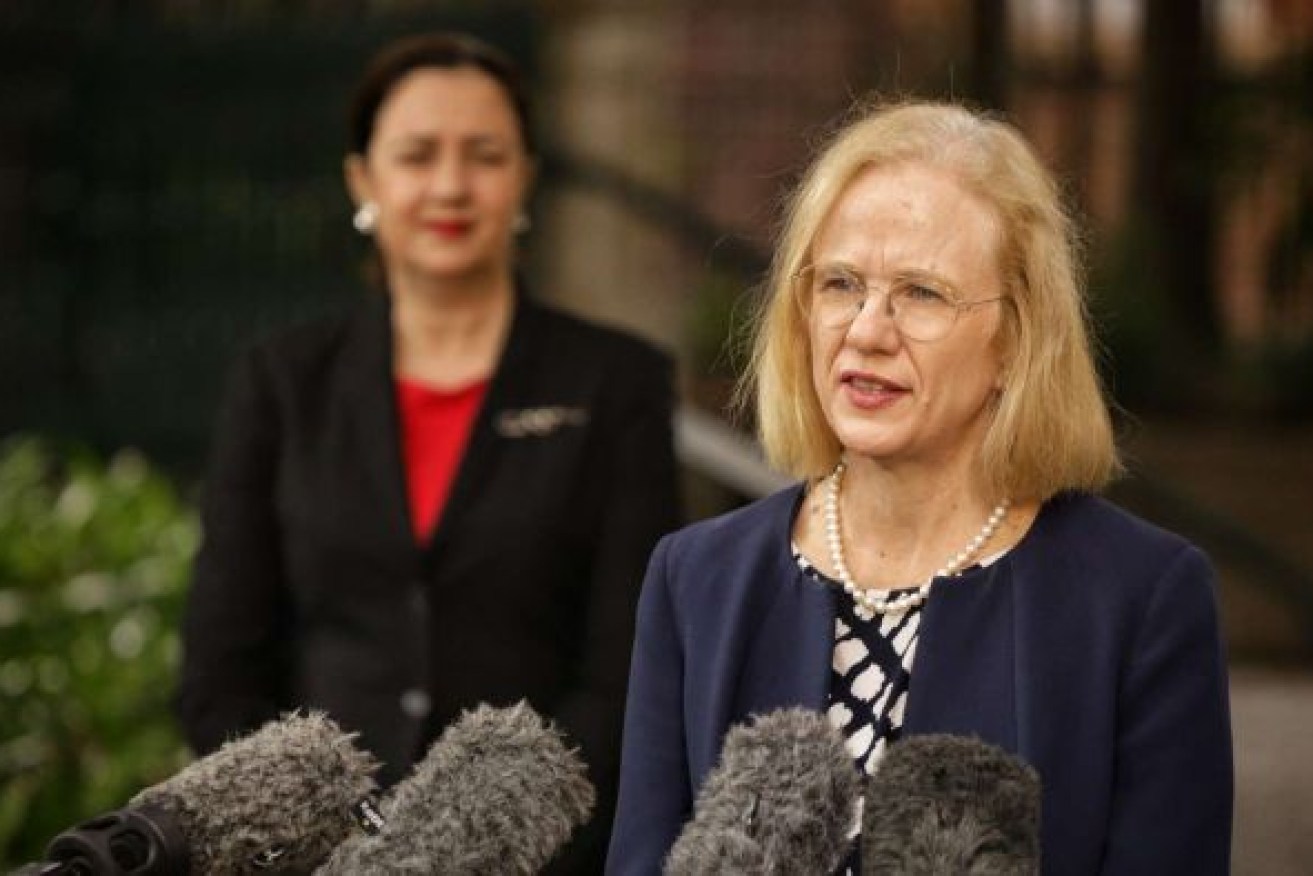Year of living dangerously: How Qld sidestepped the pandemic pitfalls
Today marks one year since the discovery of Queensland’s first COVID-19 case. As Sean Parnell writes, the state could have been dealing with a much more tragic milestone.

Queensland Chief Health Officer Jeannette Young giving one of her regular COVID-19 updates with Premier Annastacia Palaszczuk. (Photo: ABC)
By the time the more contagious UK strain of coronavirus hit Queensland this month, authorities were ready for it. Chief Health Officer Jeannette Young praised Queenslanders for heeding the warnings, and pointed to well-drilled staff and structures that had been refined over the course of the year. They had saved lives.
“At the start of pandemic, if we had that strain then, it might have been a different story,” Young told reporters.
Queensland’s first case emerged on January 28 on the Gold Coast, a member of a Chinese tour group who arrived the day before. It was not unexpected, but still came as a surprise – and a shock for those ambulance and health staff who had not been wearing PPE.
A few days later, the Chinese national women’s football team had to be quarantined in a Brisbane hotel. What is not widely known is that some of the players had to be fished out of the hotel swimming pool at one point, and reminded that quarantine meant quarantine.
Tourists, international students and Queenslanders returning from overseas were soon added to the list of cases, as Australian health officials and governments discussed the arrival of a pandemic that had been long feared but not universally prepared for. Being an island continent, able to theoretically restrict access from overseas, was only one part of the puzzle.
Queensland declared a public health emergency and set into train the disaster management structures normally used for cyclones, bushfires and floods. It gave a clear chain of command, but put extraordinary pressure on Young as the lead adviser and, with Premier Annastacia Palaszczuk, key decision-maker.
Palaszczuk was briefed on the prospect of 30,000 deaths in the state, and the first death came in March as the Ruby Princess distributed its disembarking passengers far and wide.
That there have been six deaths in Queensland to date is still a tragedy, but that the number has not risen since April – and is nowhere near even conservative forecasts – is a testament to Queensland’s structures, prudent planning, and a loyal and compliant community.
Things could have been much worse. Had the Ruby Princess passengers spread the virus in regional communities, or the Sails Restaurant cluster in Noosa kept growing, authorities would have been forced to refine their response on the go. In hindsight, containment came fairly easily in those early months. There were also scares in a central Queensland mining community and aged care that allowed authorities to learn from any mistakes. Periodic lockdowns in aged care have so far kept vulnerable residents safe.
Queensland Health has been actively planning for disaster, and at one point delayed non-urgent surgery and engaged with private hospitals to provide additional capacity. Surge planning anticipated a worst-case scenario of more than a third of admitted patients being COVID-19 cases by mid-2020, the impact of which would have been felt for generations.
In July, two Queenslanders brought COVID-19 back from an ill-fated Melbourne trip, sparking outbreaks in Logan and Ipswich, spreading in a hospital and into the outer layer of crowded youth detention and prison network. The response was strong and swift, but it is fair to say authorities did not know how or when it would end. These were trying times.
Border restrictions, while hugely controversial, have helped the health system cope with demand, effectively keeping out any new cases while Queensland deals with existing threats. Police resources have been stretched – behind the scenes, the pre-Christmas restrictions were the hardest to deliver – and the government has held the political line.
Testing rates have fluctuated, but have still been enough to detect, and rule out, new cases in clusters. That cases have largely been in the south-east or more populated centres has been fortunate, however Queensland Health will respond anywhere.
Contact tracing has also been good enough, although Young has been worried at times that people at risk were not coming forward to get tested. Sewage tests added another layer of reassurance but also another layer of concern.
Young has been pleasantly surprised by the level of compliance with mask mandates, social distancing and other restrictions. The recent greater Brisbane lockdown showed people are prepared to do their bit, perhaps after seeing the challenges interstate and overseas (Palaszczuk doesn’t miss an opportunity to remind Queenslanders how bad things are elsewhere). More importantly, it demonstrated that people have not become complacent. Every such response is either a drill, or the real thing – and no one knows until the test results come back.
As Queensland enters its second year of COVID-19, there will be more cases and likely more outbreaks, and Queensland will respond as it has in the past. But there is now another dimension to the pandemic response.
The rollout of COVID-19 vaccines will cause tensions and reignite the debate over international travel and its contribution to the Queensland economy. Regrettably, anti-vaxxers will also be given airtime, and some politicians will be as vocal on this as others were on border policies. There is also a federal election on the horizon.
At its best, Queensland sticks together, and rises to the challenge. But, at its worst, Queensland is a decentralised state, feeling a long way from the action down south, and with inequity of access fuelling significant inequality at home. The danger in 2021 is that simmering frustrations boil over and compromise the COVID-19 response.












